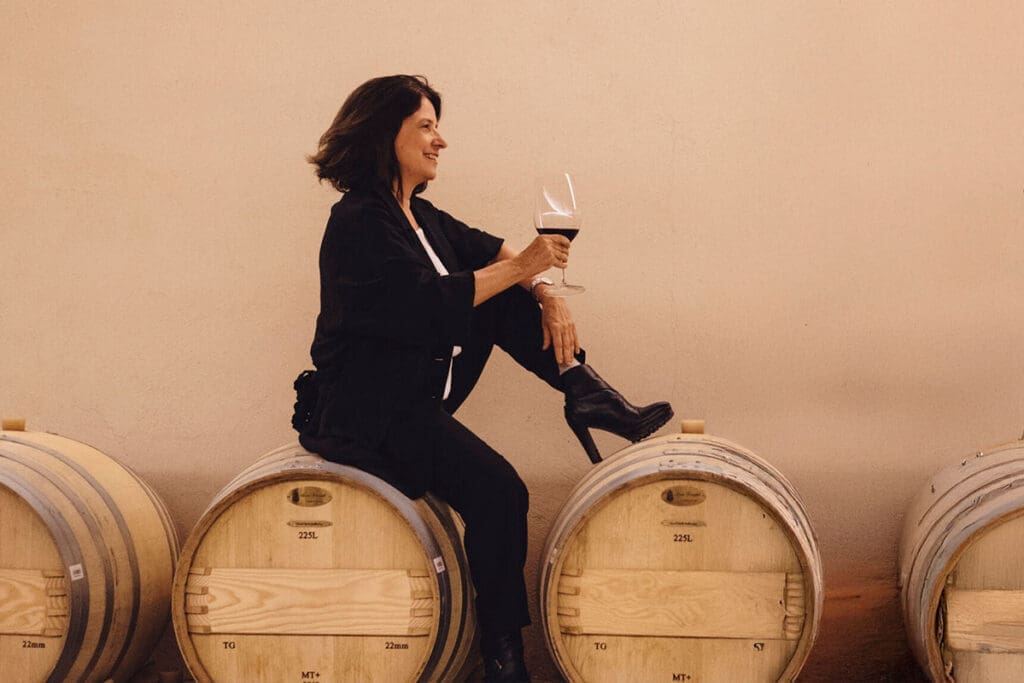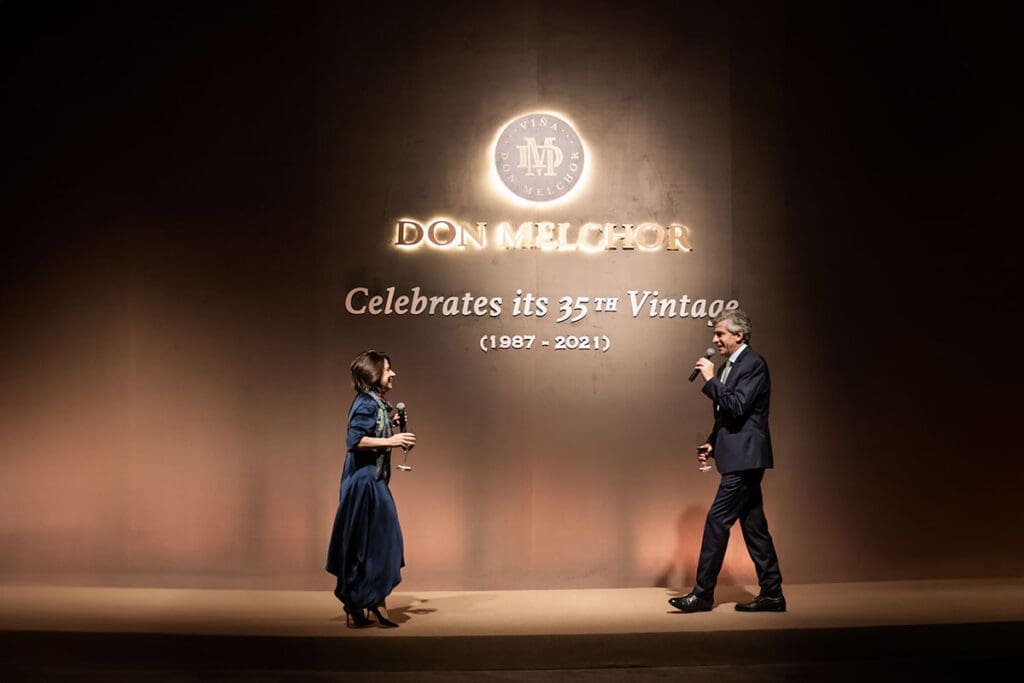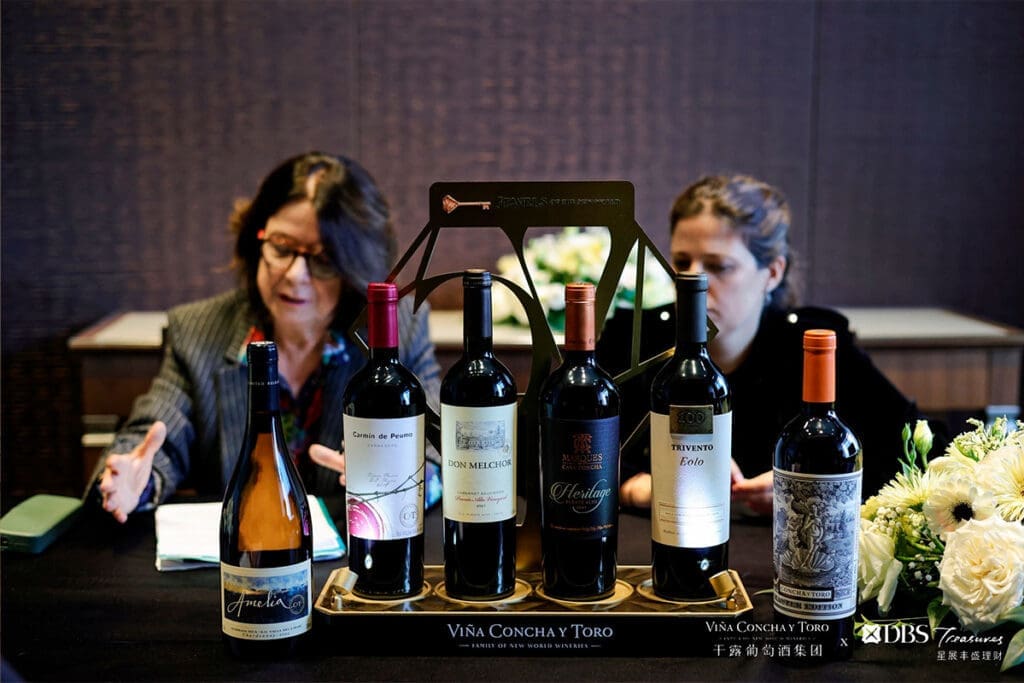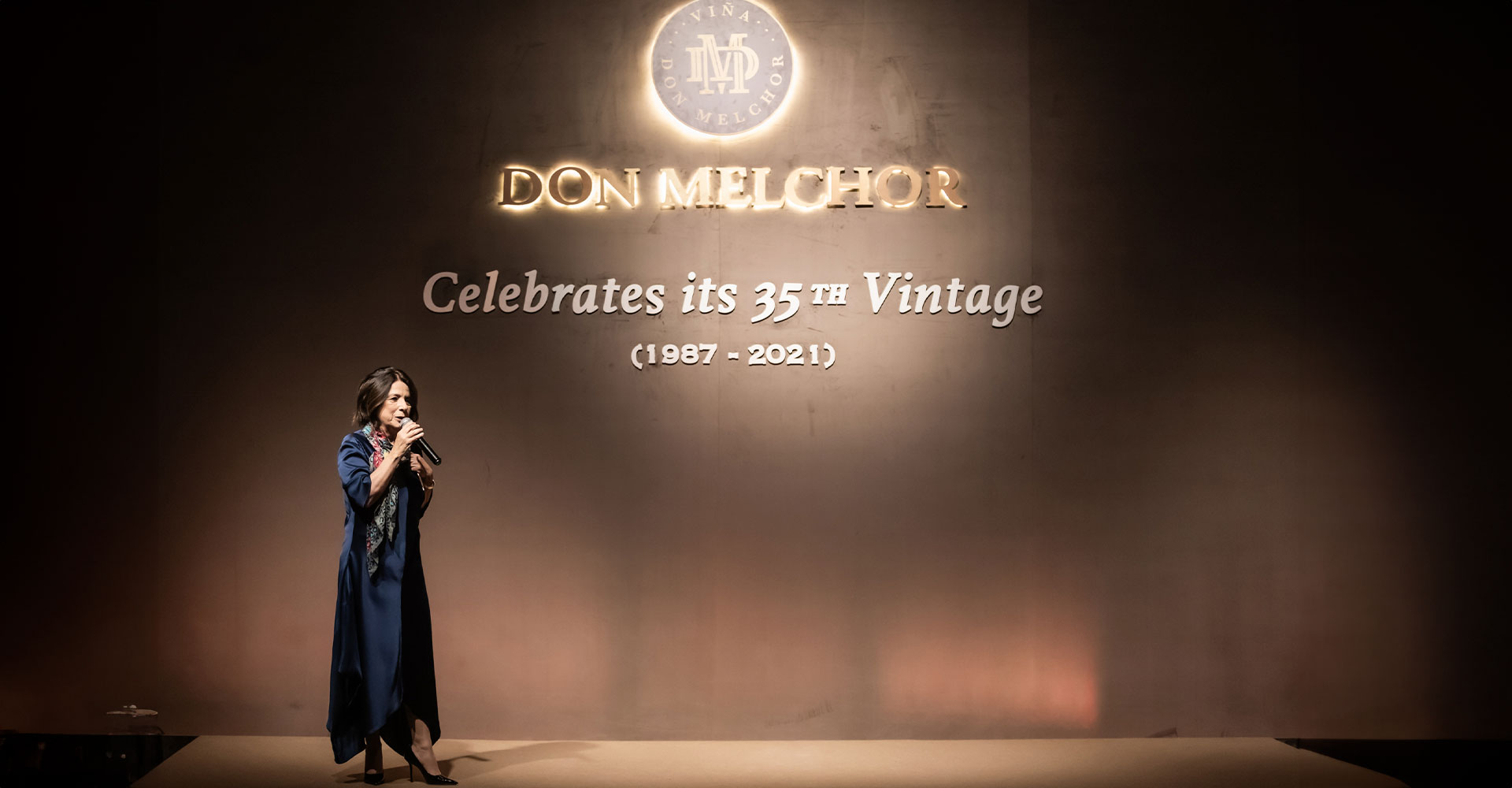27 de September de 2024
Isabel Guilisasti: “People don’t buy products; they buy experiences. That’s where the challenge lies, and the industry must adapt.”
We invite you to read the interview given by Isabel Guilisasti, Vice President of Fine Wines and Corporate Image at Viña Concha y Toro, for the influential media outlet El Mercurio. In the interview, she shares valuable insights on trends in the wine industry.
She is one of the 100 most important women in the global wine industry. Last year, she took on a new area at the company, the Luxury Brands Division, consisting of a portfolio of 14 high-end brands. That’s where the growth will be, she says. “It’s something we’ve struggled with as a country,” she acknowledges regarding the rising average price. She emphasizes that the crisis for Concha y Toro is behind them.
“I love going to markets because you get filled with energy.” In recent years, Isabel Guilisasti Gana has traveled more than usual.

In 2023, she became the head of Concha y Toro’s new high-end wine area: Luxury Brands Division, as Vice President of Fine Wines and Corporate Image. She is the public face of this portfolio, which requires consumer contact. She also noted a new milestone: the icon of this grape pool—Don Melchor—celebrated its 35th vintage anniversary, leading to a tour of its key markets. “The story behind this wine reflects our passion and our quest to preserve a terroir we were given,” she recounts in the restored Casona Don Melchor in Pirque. In 2019, that brand became independent from the parent company. “It was already 30 years old and had achieved worldwide recognition, so it was appropriate for this ‘child’ to become independent,” adds Enrique Tirado, its CEO.

Guilisasti—one of the 100 most important women in the industry globally—emotionally narrates the story of that brand. She explains that Concha y Toro, a holding controlled by the Guilisasti family and generating over $900 million annually, was founded in 1883 by Don Melchor. In the late ’80s, the opportunity arose to export premium wines from Chile. “We have a very special terroir in Puente Alto, and we realized this place had great qualities for producing Cabernet Sauvignon.”
They traveled to France to see with experts if that land had potential… and it did. Don Melchor was born. In its second vintage, it was selected among the 100 best wines in the world, an unprecedented milestone for the sector. “That changed Chile’s image.” In 1996, Concha y Toro formed a partnership with Baron Philippe de Rothschild, owners of Mouton Rothschild… and began their journey into the high-end segment.
—In 2017, you launched the premiumization strategy. How does it fit into this story?
“In 2017, we looked at the industry and saw that significant growth would come from this premiumization of wine. We also noticed consumers were willing to spend more on higher-priced wines. The company decided to focus all our efforts on premium brands and above. It has been a very successful strategy. More than 50% of our revenue comes from the premium wine segment. We identified the leaders of this premiumization: within the premium segment, Casillero del Diablo, and within the icon segment, Don Melchor. Don Melchor plays a leading role in the 2023 portfolio of fine wines.”

—Is that when the Luxury Brand Division was created?
“In 2023, we decided to form the Luxury Brand Division, which includes the ultra-premium and icon brands of the company from three origins: Chile, the USA, and Argentina. It’s a portfolio of 14 brands, where we defined a much deeper premiumization strategy. What would our sales channels be? Our distribution network? Who would be part of this Luxury Brand Division team? We needed to connect directly with our consumer. We built a network, which we call the Luxury Brand Division, with people in Brazil, the UK, China, Asia-Pacific, and the United States, who work exclusively for this.”
—It has been difficult for the industry to achieve a higher average price and shed the stigma of being good, beautiful, and cheap. What does that respond to?
“It has been a challenge for us as a country. In the wine industry, you have what is called the Old World: France and Italy. Their history has been marked by those wines in terms of high value. The New World started participating in this industry with somewhat timid proposals at first, more volume-oriented, and gradually we’ve had to win over the luxury consumer. Today, that luxury consumer has changed; they no longer think they can only drink French wine. This transition is a great opportunity for Chilean wine and the New World to enhance its value perception. As Chile, Australia, and California produce high-quality wines, the doors will open to elevate the price segments that the New World has been targeting. For example, today, a wine from California may cost 30-40% less than a Mouton.”
—But are we being too timid? You hear this for decades, yet the average price has fallen by 6.6%.
“Globally, what is growing is premium and above. Wine experienced a redefinition after the pandemic; growth slowed down because growth rates were so high that one tended to think those rates would continue, but that wasn’t the case, due to inflation, interest rates, and the amount of stock in the world. Now, what is our role as Chile? Why is it so hard for us? Not due to a specific market situation, not because there are fewer consumers, and not because the premium segment isn’t growing. It’s not about that. It has to do with how we’ve positioned ourselves as Chile on the global stage.”
—Regarding being good, beautiful, and cheap?
“It has been difficult to make that change, because today you ask, how can we position our wines so that they are accessible to this new global consumer? How can we make these wines generate more value? And through industry associations, we’ve sought insights to attract this new consumer.”
—What does this new consumer seek?
“The new consumer is marked by Generation Z and millennials, which is completely different. Today, the classic 4Ps of marketing (price, product, promotion, place), which originate from the product, are not enough to sell. You must add the 4Es: emotion, experience, exclusivity, engagement—how you connect with the consumer. Placing the product on the shelf is not enough; you must generate an experience around it. Previously, the product ruled; today, the consumer does; thus, you must engage with them.”
—How are we doing that as Chile?
“We are in that strategy today. As Wines of Chile, we are working hard on how to convey a more natural, authentic world related to the country’s geographic landscapes, like Patagonia; that is the major campaign Wines of Chile is running today. But you can also create new experiences around your brand.”
“The industry is challenged”
—How challenged is the industry today? Don Melchor fell 14.5% in value in the first half…
“The industry is challenged because the global scenario is complex. There is volatility and high-interest rates, but that doesn’t mean people will stop consuming wine. The big question is who will do well or poorly. Or how do we understand today’s market? How do we adapt as Concha y Toro or as a company to this new generation? How do we reach them? That is the big question. That’s the big challenge. The world has changed, and that’s what we need to get into our minds: people don’t buy products; they buy experiences. That’s where we have the big challenge, and the entire industry worldwide faces it. It’s a new scenario, and the industry must adapt, create, and deliver more value.”
—You have been pursuing this premiumization strategy for many years. Do you have an advantage over your competitors?
“Yes, there’s still much growth ahead, but advantages come when you start to visualize a strategy years in advance and begin to align your entire company with that vision.”
—This semester, profits grew 263%. Has the crisis passed for the company?
“I think so. Sure, there are moments when you might have destabilizers, like in 2023 when distributors or retailers stocked up on enormous amounts of wine, but that is no longer an issue. And that’s where we are; I believe growth in the wine industry will come from innovation, new launches, and understanding the consumer well. If you start working with all these insights, you should only generate growth. In fact, in 2019, we also began working on experiences. We opened the Don Melchor experience in the Casona. And today we are investing there.”
—Is this consumer Chilean or foreign?
“Mainly Brazilian; they love wine. Chile is very well positioned in South America as a producer of great wines. We’ve conquered them.”
—Is Argentina achieving the same development in high-end wines?
“Yes. Argentina is a major producer of Malbec and has positioned itself quite well in specific markets. Chile has broader global reach, is in more countries, and has been conquering the world for many more years than Argentina. Luxury has also been democratized; previously, to access the luxury world, you had to meet very high standards. Today, for this young consumer around 30-35 years old, luxury is more accessible; it’s a much more transversal world.”
—Many companies struggle to connect with their consumers…
“It’s a matter of observation. We have been very focused on understanding this new consumer. Before 2017, we said: ‘Okay, the company stopped being a producer-centered wine business, and now it’s about how we reach that consumer to deliver the values they seek to achieve.’ There is vision, and my brother Eduardo has always been very focused on this, encouraging us to look at the consumer with more attention and dedication. But it’s not enough to just know; you have to feel it. That empathy to understand the consumer involves staying updated, not sticking to old paradigms, and being open to change.
That’s why I love a quote from Bernard Arnault, owner of LVMH. He says that a great brand always honors its past while appearing highly contemporary. For me, this has been a great inspiration in my life. At Concha y Toro, we dedicate ourselves to honoring the past, while at the same time appearing highly contemporary. This has allowed us to remain relevant and, in some ways, lead the wine industry.”
—Especially when you have a strategy on one side but also face significant economic challenges; your profits dropped over 50% in a moment.
“In these situations, you have to dare to take risks because sometimes they present great opportunities. You need to close your eyes and bet on something you deeply believe in. Certain statistics support this as well. The luxury industry grew by 63% in value between 2018 and 2023. A 20% growth is projected for 2025, and by 2028, sales are expected to reach 2.1 trillion euros. Within the luxury industry, tourism, Fine Wine and Spirits, and gastronomy are among the top five industries. So, the wine industry will grow, regardless of the current situation.”
—What are your projections if 53% of sales are already premium and above?
“The super-luxury segment represents less than 4% of the company. We aim to reach at least 5% by 2027; the value of this segment is quite significant. And we will achieve it.”
—Aurelio Montes said that the industry won’t fully recover until 2026. How do you project it?
“It’s hard to visualize because many things are happening in the global economic landscape, but regardless, if we can position Chile and bring solid brands into the premium segment and above, we should achieve growth.”
—For 2026 or for 2025?
“I believe looking towards 2026.”
—And how is Concha y Toro navigating this scenario?
“In the case of Concha y Toro, market diversity allows us to navigate better during more challenging times. As a company, the only thing we know how to do is wine. Each day we focus on how to add greater value or enhance the industry. Our perspective is 100% focused on the wine world. We navigate a bit through storms, but the path is clear.”
To access the original article, click here.










